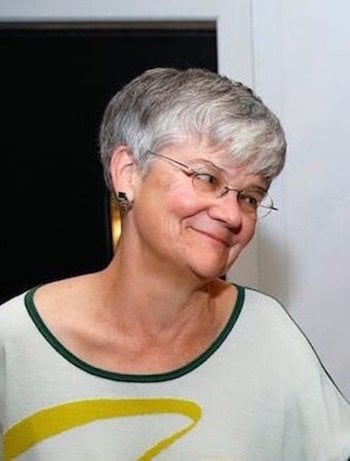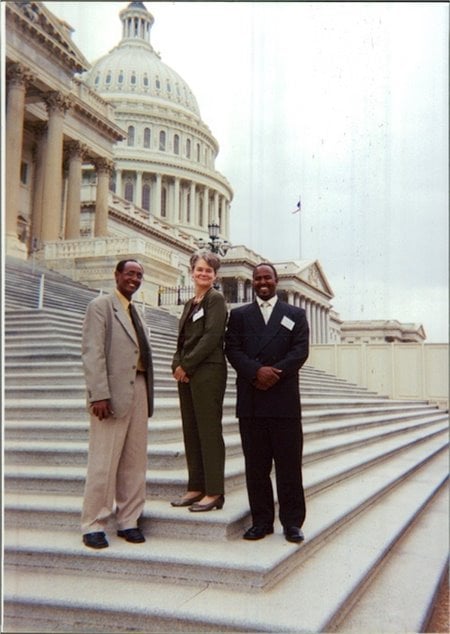Sue Reynolds is retiring after 23 years in a job she initially didn’t know she wanted. She was working as a tax credit project consultant for Community HousingWorks, when the exiting director asked her if she'd serve in the position of interim director. Reynolds had never supervised more than one other person at the time when she said 'yes.'
"I fell in love with the organization,”"she says. She decided to apply for the job permanently and received the appointment. That’s where she's remained ever since.
 When she started, CHW covered the north part of San Diego County. The organization had a staff of 13,300 apartments, and an annual budget of $1.3 million. "Our goals were to continue building out our pipeline and serving the North County communities we were focused on at that time," she says.
When she started, CHW covered the north part of San Diego County. The organization had a staff of 13,300 apartments, and an annual budget of $1.3 million. "Our goals were to continue building out our pipeline and serving the North County communities we were focused on at that time," she says.
Twenty-three years later, the organization's focus has expanded beyond San Diego County to the whole state. CHW owns 3,700 apartments, has 70 staff members, and has another 1,000 apartments in the pipeline.
Reynolds says several key decisions led to the organization's expansion. They went countywide in a move toward impact and sustainability. Then, then, in 2001, CHW merged with another San Diego NeighborWorks organization, a City Heights-based nonprofit called San Diego NHS. "We had a huge growth spurt during the foreclosure crisis, serving over 5,000 homeowners," she says.
Another key decision came in 2014, when the organization decided to go statewide with rental apartments and homeownership programs. The next year, they decided that to continue to grow, they needed to separate the two programs again. They spun off homeownership programs and continued to build rental apartments.
The organization is known for a number of signature projects, including North Park Seniors, LGBTQ-affirming housing for residents age 55 and older, the seventh such community to be completed in the country. "Since I'm a lesbian myself, I've been dreaming of such a place since I was young – back then, I thought that building it, or getting old and qualifying for it, were equally improbable," she says with a laugh. "It had a very special meaning to me."
The project rose out of an effort by the nearby San Diego LBGT Community Center, to serve LGBT+ older adults who were more likely to be isolated and have lower income, and with worse health outcomes than other groups, because of losses that came from the AIDS epidemic "and the closeting that was a complete reality for that generation. Some of the warriors who fought for and won civil rights for the LGBT+ communities were at risk of being forced back into the closet again because other folks in that generation were still not ready to accept them," Reynolds says.
They found the perfect site during the recession that followed the 2008 housing crisis and turned it into a mixed-income community that felt safe to older residents. There were also eight apartments set aside for people who were homeless. "We broke new ground in local planning policy and density bonus policy," Reynolds says. "It was a win for the community."
One of their most nationally well-known housing projects is the community known as SOLARA, the first apartment community fully powered by the sun. CHW built the community in 2007, before there were even guidelines promoting green apartment buildings. "Innovating sustainability," Reynolds calls it. "Now, of course, sustainability is as ordinary as lumber."
Reynolds continues to work as a consultant and volunteers for the San Diego Eviction Prevention Collaborative and for Yes In God’s Back Yard, an organization that works with faith communities to develop affordable housing on their parking lots and excess land.
Some of Reynolds’ lessons learned during her time as CEO include:
Create an environment where it's safe to think about the unthinkable: "The unthinkable is to expand beyond your home county, across California. The unthinkable is to merge with another nonprofit. The unthinkable is to split the two sides of your organization in two when they hold each other back. Create an environment where you can think about the unthinkable is an important part of strategically meeting the needs of communities."
Invest in your board: Make it ordinary to have generative discussions and to generate diversity. "That allowed us to do many bold things, including raising an internal quick strike fund of over $20 million because we had a board that could have strategic conversations."
Dare to be joyful: "When you go into the workplace or into the community, dare to be joyful. That was always a part of our work."
Rev. Jim Dickerson shares lessons learned from his time at Manna, Inc.
Lessons learned from Brenda Torpy at Champlain Housing Trust.
01/14/2021

